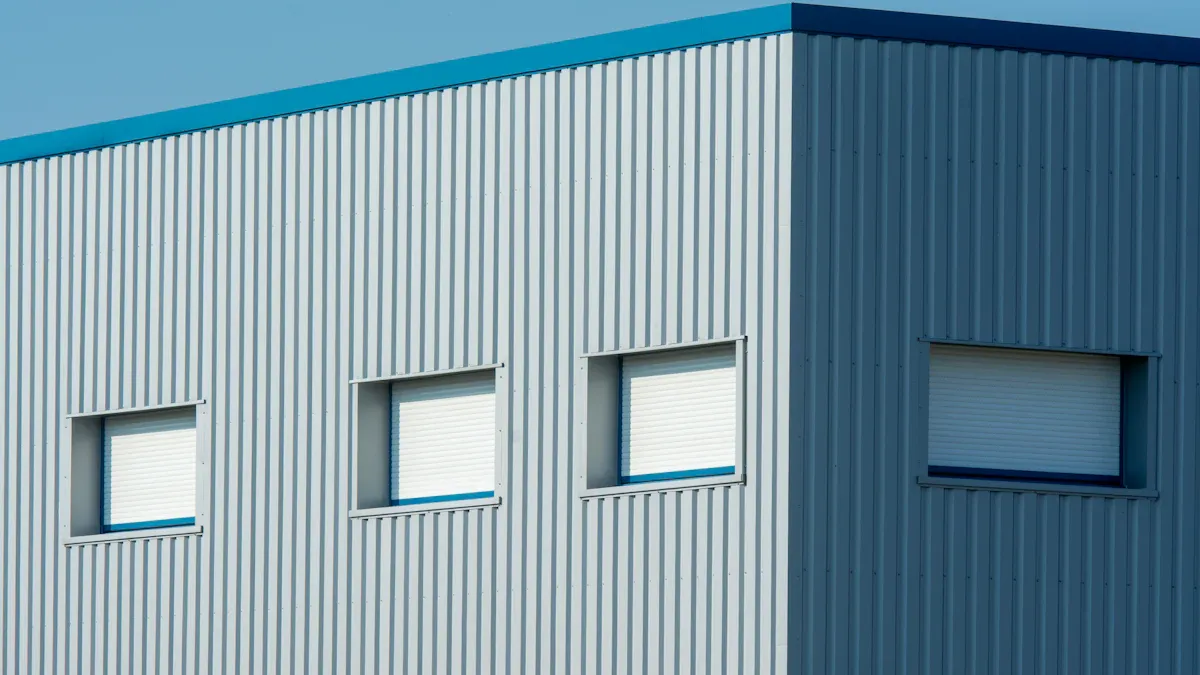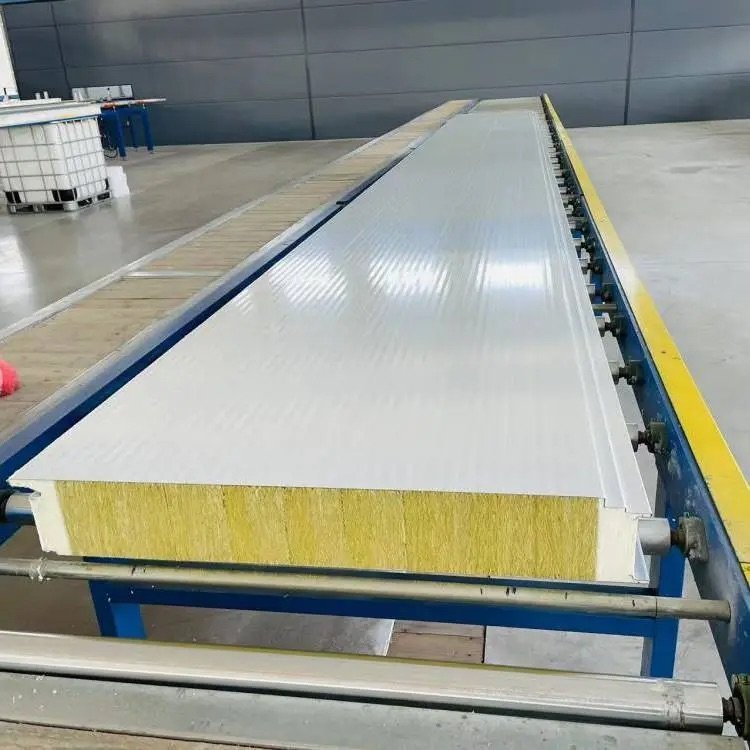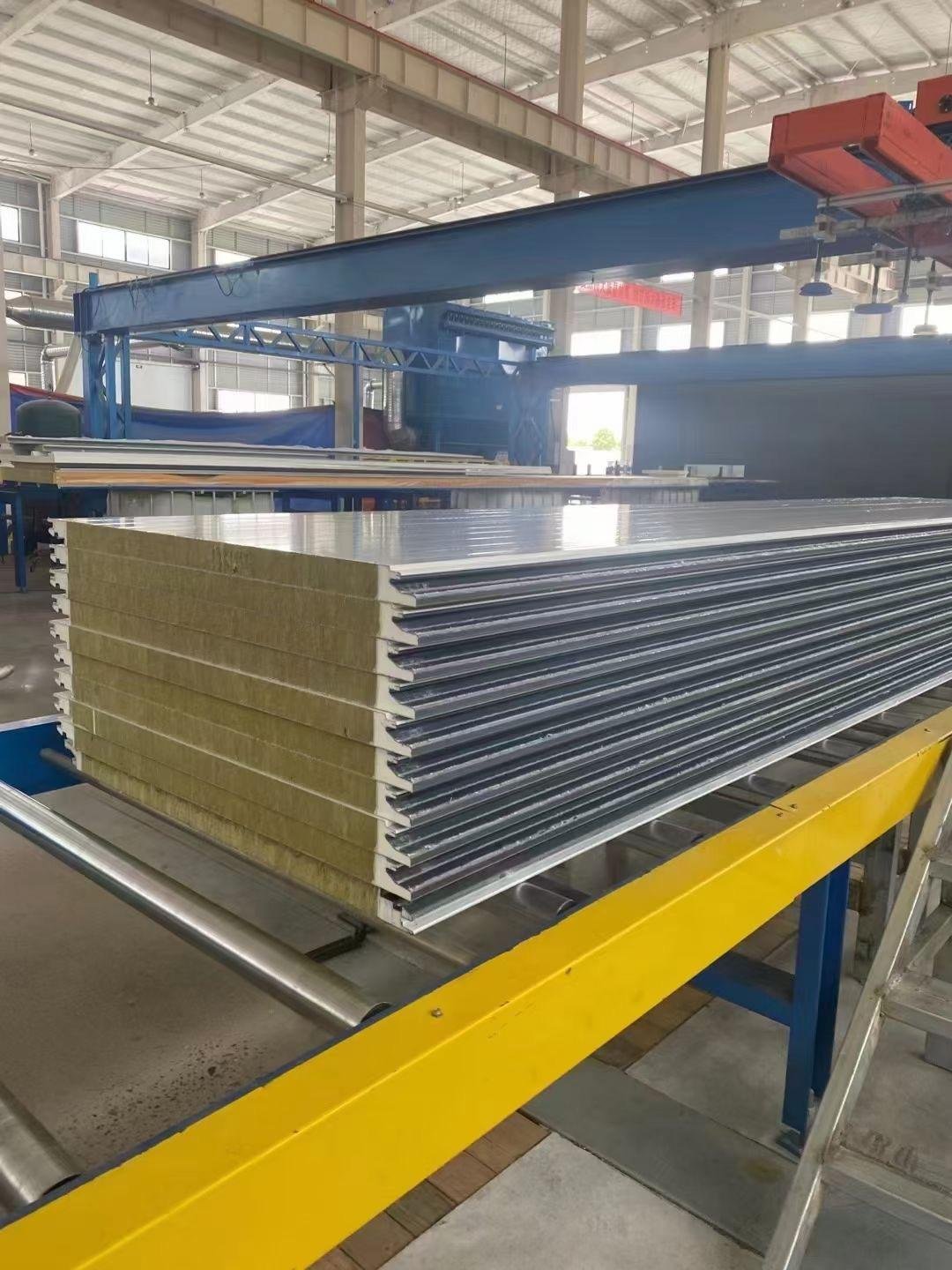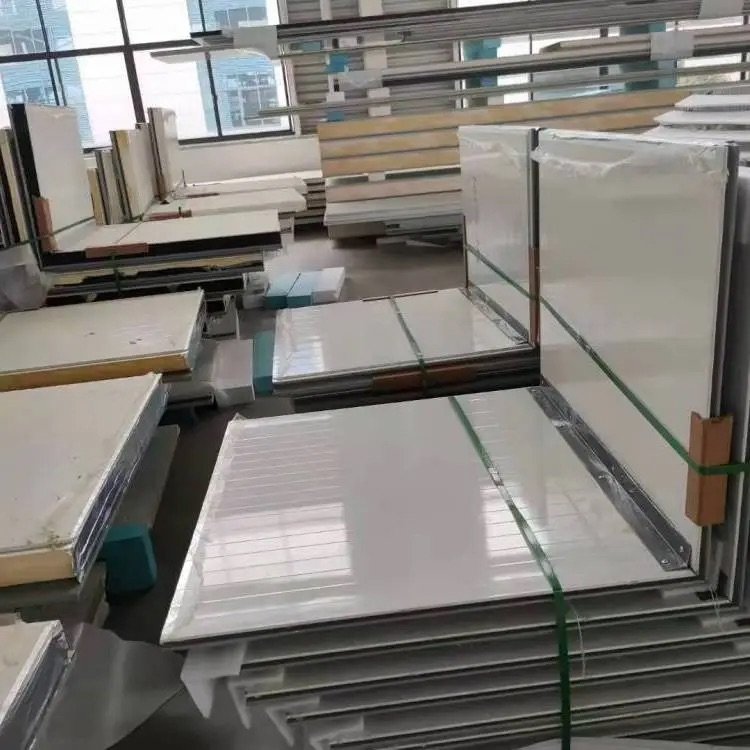
EPS sandwich panels are useful in construction but require careful handling to avoid common mistakes. These errors can make them work less effectively. It is essential to handle, install, and maintain them properly. Common mistakes can lead to weaker panels, reduced efficiency, and increased costs. For instance, improper storage or incorrect installation can cause damage over time. Spotting these common mistakes early can save money and keep your project running smoothly.
Tip: Always use proper methods to get the best from EPS panels.
Key Takeaways
Keep EPS sandwich panels in a dry, open area. Use pallets to lift them off the ground.
Clean and level the surface before installing panels. This helps the adhesive stick well.
Measure carefully and leave small gaps for expansion. This stops bending or cracking from heat or cold.
Check EPS panels often for damage and fix problems fast. Quick repairs save money and make panels last longer.
Follow local building rules and maker’s guidelines. This keeps your construction safe and effective.
Common Mistakes in Handling

Improper Storage Practices
Storing EPS sandwich panels the wrong way can harm them over time. Always keep these panels in a dry and airy place. If the storage area is humid, the metal parts can rust, making the panels weaker. Another mistake is placing panels directly on the ground. Water from rain or the ground can soak into the panels, causing damage. To stop this, use soft sticks or pallets to lift the panels off the floor.
Tip: Check your storage area for leaks or damp spots before storing panels.
Exposure to Sunlight and Water
Leaving EPS sandwich panels in sunlight or water can shorten their life. Sunlight can melt the protective film, sticking it to the metal. It can also turn the foam core yellow, which looks bad and works less well. Water can soak into the panels, making them weaker and less insulating.
To avoid these problems, cover the panels with a UV-proof tarp or store them inside. Keep them away from water or places that might flood.
Incorrect Stacking Techniques
Stacking panels the wrong way is a common error. Big stacks can press too hard on the bottom panels, bending or cracking them. Uneven surfaces can also cause damage by spreading the weight unevenly.
When stacking, make sure the surface is flat and steady. Don’t stack too many panels together to avoid damage. Stacking correctly keeps the panels safe and makes them easier to use later.
Note: Follow the maker’s rules for stacking and storing to keep panels safe.
Handling on Uneven Surfaces
Putting EPS sandwich panels on bumpy ground can harm them. Uneven surfaces create pressure spots, which may bend or crack the panels. This makes the panels weaker and less useful for building.
To stop this, check the ground before placing panels. Make sure it’s flat, steady, and clean. If the ground isn’t even, use tools to level it or lay wooden boards. This easy step helps protect the panels and makes them last longer.
Don’t drag panels on rough ground. Dragging can scratch their coating or damage the foam inside. Instead, lift them carefully and set them down gently. Use tools like forklifts or panel lifters to make lifting safer and easier.
Also, don’t stack panels on uneven ground. Stacks on unstable areas can fall, breaking panels and causing danger. Always stack on flat, strong ground. Follow the maker’s rules for stacking height and weight.
By being careful, you keep panels in good shape and working well. Handling them right saves time, money, and avoids problems in your project.
Tip: Always check the ground before unloading or storing EPS sandwich panels.
Common Mistakes During Installation

Poor Site Preparation
Not getting the site ready can cause big problems. Dirty or uneven surfaces stop panels from sticking well. This makes them weaker and less durable. Always clean and level the surface first. Remove dirt, dust, or water that could mess up the adhesive. Skipping this step leads to weak adhesive contact, which hurts the panel’s performance.
Tip: Use a level tool to check if the surface is flat before starting.
Incorrect Measurements
Measuring correctly is very important for EPS sandwich panels. If you rush, panels may not fit right. This can cause gaps or overlaps, making the structure weaker. Double-check your measurements before cutting or placing panels.
Another mistake is forgetting about expansion gaps. Panels expand or shrink with temperature changes. Without gaps, they might bend or crack. Leave small spaces between panels as the maker suggests to avoid this.
Improper Adhesive Application
Using adhesive the wrong way is a common problem. Too much adhesive can leave seams and take longer to dry. Too little adhesive makes the panels unstable. Follow the maker’s instructions for how much and how to apply it.
Here’s a simple table of common mistakes and their effects:
Common Mistakes | Effects |
|---|---|
Rushing the Process | Bad measurements and poor alignment, causing instability. |
Skipping Surface Preparation | Weak adhesive contact, reducing strength and durability. |
Overapplying Adhesive | Extra adhesive causing seams and slow drying. |
Ignoring Expansion Gaps | Panels may bend or break due to temperature changes. |
Note: Always pick good-quality adhesive made for EPS sandwich panels. This ensures a strong and lasting bond.
Fixing these mistakes makes installation easier and the structure stronger.
Not Securing Panels Correctly
Not securing EPS sandwich panels properly can cause big problems. Panels that are not fixed well might move, loosen, or even fall. This can make your building unsafe and less stable.
To prevent this, always follow the maker’s instructions for securing panels. Use the right tools and fasteners to keep them tight and steady. Skipping this step or using the wrong materials can weaken the connection between panels and the structure.
Here are some common mistakes to avoid:
Using wrong fasteners: Incorrect screws or bolts won’t hold panels tightly.
Over-tightening fasteners: This can harm the panel’s surface or crush the foam inside.
Under-tightening fasteners: Loose fasteners let panels move, causing gaps and weak spots.
Tip: Check fasteners after installation to make sure they are tight and straight.
Another important step is aligning the panels before securing them. Misaligned panels leave gaps that reduce insulation and let in water or air. Use a level or laser tool to check alignment while installing. This easy step can save you from fixing problems later.
Also, secure panels at all the points the maker suggests. Skipping fasteners to save time or materials makes the structure weaker. Properly secured panels last longer and make your project safer.
By avoiding these mistakes, your EPS sandwich panels will work well and stay strong for years.
Common Mistakes in Design and Material Selection

Ignoring Load Calculations
Not calculating loads correctly can cause big problems. Think about all loads like wind, snow, and people when designing with EPS sandwich panels. Skipping this step or using old tools can make panels too weak. Weak panels may crack or even break. Always use updated tools and follow local building rules to keep the structure safe.
Common Mistake | Explanation |
|---|---|
Missing important load factors can cause panels to fail. Use modern tools and follow building codes to avoid problems. |
Tip: Check your math twice and ask an expert if unsure.
Overlooking Thermal Bridging
Thermal bridging happens when heat escapes through panel parts. This lowers insulation and raises energy bills. It often happens at joints or where metal fasteners are used. Ignoring this problem makes buildings less energy-efficient.
To fix this, use spacers or thermal breaks that stop heat transfer. These materials help keep the panels insulating well. Good design and materials can save energy and make buildings more comfortable.
Note: Fixing thermal bridging early avoids expensive repairs later.
Choosing Unsuitable Materials
Picking the wrong materials can hurt how EPS sandwich panels work. For example, materials without fire resistance or good insulation can make buildings unsafe. Weather changes also affect material performance.
Temperature differences inside and outside panels can cause bending. This bending creates stress and weakens the panels. Expanding and shrinking from heat changes can also damage them. Always pick materials that match the weather and meet safety rules.
Tip: Read the maker’s guide to ensure materials fit your project.
Avoiding these mistakes makes your building stronger, safer, and more efficient.
Not Following Building Codes
Not following building codes is a big mistake with EPS sandwich panels. These rules are made to keep buildings safe and strong. Ignoring them can cause weak structures, legal trouble, or safety risks.
Building codes explain what is needed for fire safety, strength, and insulation. Skipping these rules means your project might not be safe. For example, using panels without fire safety ratings can make fires spread faster. This puts the building and people inside at risk.
Another mistake is ignoring the weather in your area. Codes often have rules for insulation based on the local climate. If you don’t follow these, your building might lose heat or cool air. This makes it less comfortable and raises energy bills.
To avoid these issues, always check the building codes before starting. Here’s how you can do it:
Learn local rules: Find out what your area requires for EPS sandwich panels.
Ask experts: Get help from architects or engineers who know the rules.
Pick approved panels: Use materials that meet the safety standards.
Keep records: Save all test results and certifications for proof.
Tip: Breaking building codes can cost you money and time. Always follow the rules to keep your project safe and high-quality.
By avoiding these mistakes, your building will be safer, better, and meet all the rules.
Common Mistakes in Maintenance
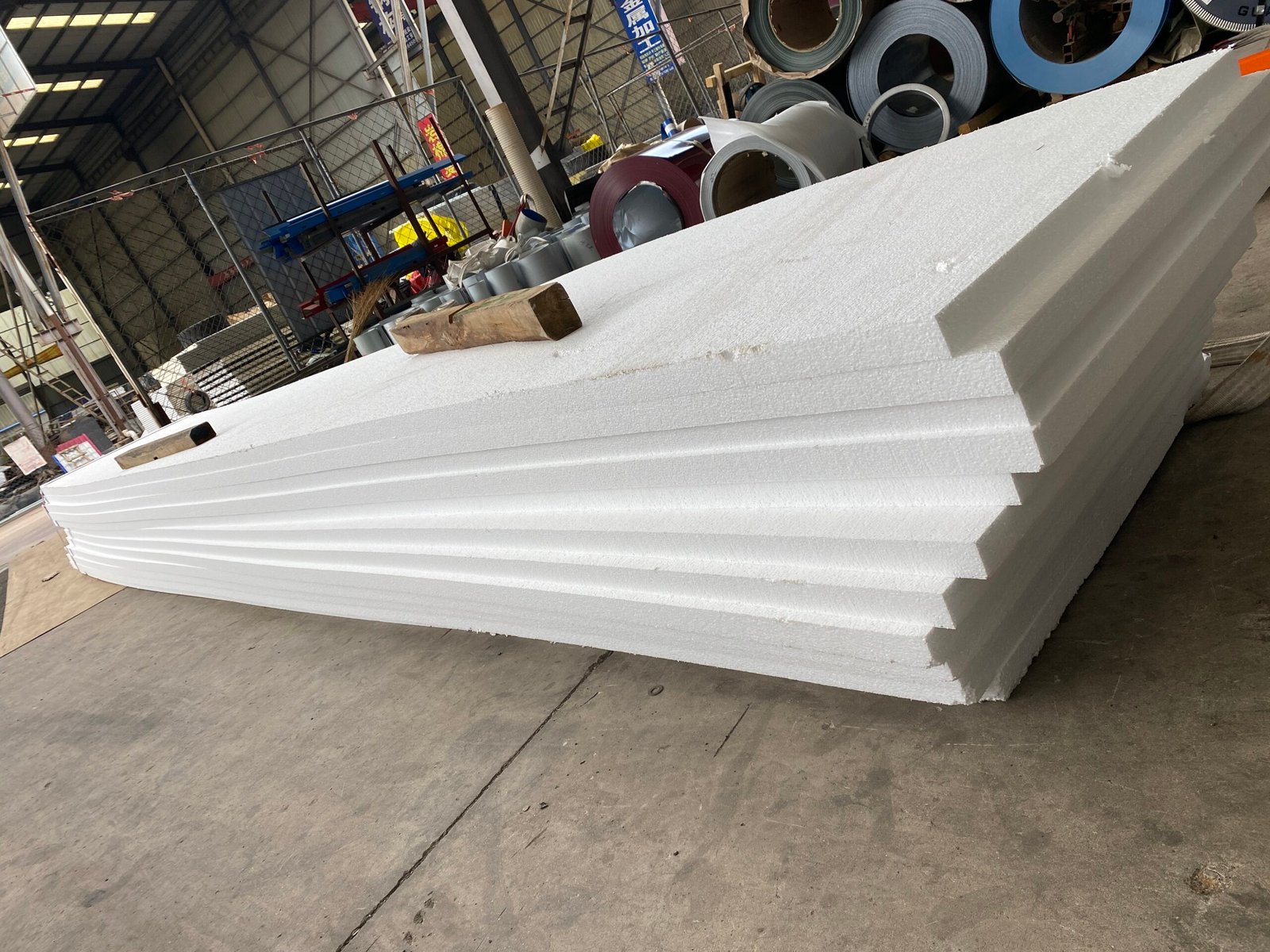
Skipping Regular Checks
Not checking EPS sandwich panels often is a big mistake. Look for cracks, dents, or holes on the panels. Small problems can grow into bigger ones if ignored. Finding damage early helps you fix it before it gets worse. Regular checks also show wear from weather or use.
Tip: Check your panels every few months to find issues early and make them last longer.
Ignoring Damage Repairs
Leaving damage unfixed can cost you more later. If you see cracks, dents, or loose parts, fix them fast. Waiting too long lets water or air get inside, making panels weaker. Fixing small problems quickly stops them from becoming bigger.
Make a list to track repairs so nothing is missed. Use the right tools and materials to fix panels properly. For serious damage, ask a professional for help.
Note: Fixing damage quickly saves money and keeps panels working well.
Cleaning the Wrong Way
Cleaning panels the wrong way can ruin them. Strong chemicals or rough tools can scratch the surface or harm the foam. Use gentle soap and soft cloths to clean panels. Don’t use high-pressure water sprays, as they can push water into the seams and damage the foam.
Cleaning often removes dirt that can hurt the panels’ performance. Follow the maker’s cleaning rules to avoid mistakes. Cleaning the right way keeps panels looking good and working well for a long time.
Tip: Test cleaning products on a small spot first to make sure they are safe for the panels.
Ignoring Long-Term Wear and Tear
Over time, EPS sandwich panels can slowly get damaged. Ignoring this wear can cause big problems. Panels might lose their strength, insulation, or protective layers. Always check their condition to keep them working well for a long time.
One issue is damage to the outer layers. Weather, temperature changes, or pressure can cause cracks or peeling. These small problems let water or air inside, making the panels less effective. Regular checks help you find these issues early.
The foam core can also weaken over time. Moisture or extreme heat and cold can harm the foam. This lowers the panel’s insulation and strength. Look for signs like wet spots or color changes to catch problems early.
Fasteners and joints wear out too. Loose screws or broken seals create gaps that weaken the panels. Tighten screws and replace bad seals to keep panels secure.
Here’s how to handle long-term wear:
Check panels every six months for cracks or loose parts.
Fix small damages quickly to stop them from getting worse.
Add protective coatings to make panels last longer.
Replace panels that are too damaged to fix.
Ignoring wear and tear can make EPS sandwich panels fail sooner. By staying on top of maintenance, you save money and keep panels working well.
Tip: Use a maintenance log to track checks and repairs. This helps you stay organized and spot repeated problems.
To use EPS sandwich panels well, avoid common errors in storage, setup, design, and care. Storing them wrong, skipping site prep, or ignoring load rules can make panels weaker and less effective. Checking them often and fixing issues quickly helps them last longer.
Tip: Follow the maker’s instructions and local building rules for safety and good results.
Using these panels the right way saves money and keeps your project strong. It also makes your building energy-efficient for a long time.
FAQ
1. What are EPS sandwich panels made of?
EPS sandwich panels have a lightweight EPS core between two strong outer layers. These layers are usually metal or fiber-reinforced plastic. This setup gives great insulation and strength.
Tip: Check material details to ensure they fit your project needs.
2. Can EPS sandwich panels be used in all climates?
Yes, but pick panels made for your area’s weather. Some panels have UV protection or extra insulation for tough climates. Always follow the maker’s advice to choose the right type.
3. How do you maintain EPS sandwich panels?
Check panels often for damage. Clean them with gentle soap and avoid strong chemicals. Fix cracks or dents quickly to stop bigger problems. Good care keeps them working well for years.
Note: Use a log to track checks and repairs for better upkeep.
4. Are EPS sandwich panels fire-resistant?
Some EPS sandwich panels have fire-resistant coatings or cores. Not all panels have this feature, so always check their fire safety rating before buying.
5. How long do EPS sandwich panels last?
If handled, installed, and cared for properly, they can last 20–50 years. Their lifespan depends on quality, weather, and regular maintenance.
Tip: Follow the maker’s care tips to make them last longer.

